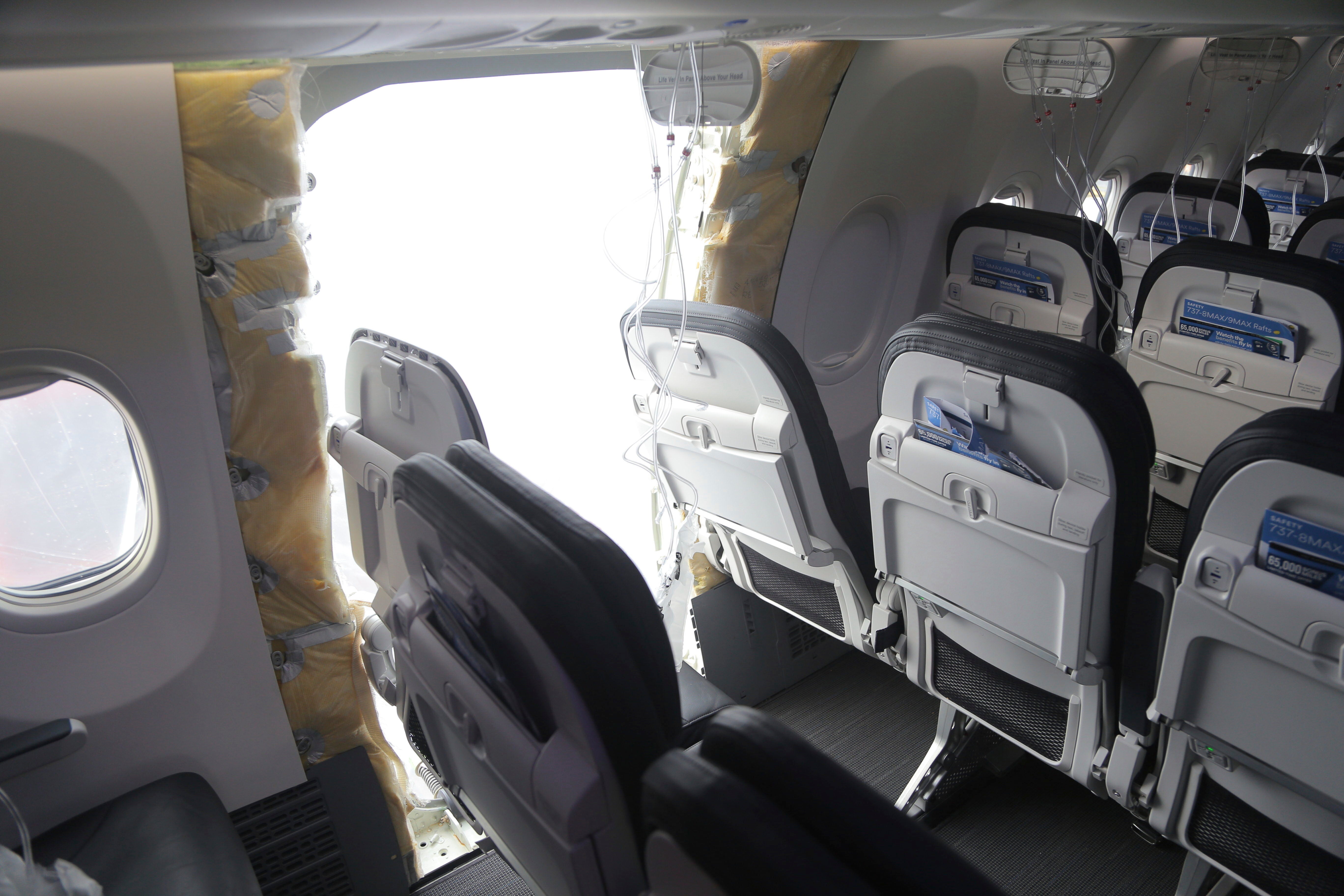The Alaskan pilot thought the passengers were sucked into the air when the door blew off in the middle of the plane
Your support helps tell our stories
As your White House correspondent, I ask the tough questions and look for the answers that matter.
Your support enables me to be in the room, pushing for transparency and accountability. Without your contribution, we will not have the resources to challenge those in power.
Your donation makes it possible for us to continue this important work, keeping you informed every step of the way to the November election
Andrew Feinberg
White House Correspondent
Emily Wiprud didn't know exactly what happened, but the Alaska Airlines pilot was sure something was very wrong as Flight 1282 took off from Portland on January 5.
“The first indication was a bang in my ear and then the sound of wind,” Wiprud, an Alaska Airlines pilot, told CBS News of the flight. “My body was forced forward and there was a loud noise… The flight deck door was open. I saw tubes hanging from the cabin.”
In the chaos, the Boeing 737 Max 9 jet lost a large panel called a door plug, and some passengers' headsets flew off the plane, as did their mobile phones. He looked around and saw “empty seats and injuries” and feared that some passengers had also been thrown from the plane.

Wiprud said he looked down the plane's aisle and saw rows of passengers staring back at him, some of them injured.
“I didn't know the plane had a hole until we landed,” he added. “I knew something was catastrophically wrong.”
An investigation by the National Transportation Safety Board later revealed that the jet was missing bolts holding its door plugs, a panel that covers slots in the plane's body used for emergency exits and converts to normal-looking windows for passengers.
Miraculously, the plane was able to make an emergency landing in Portland with 177 passengers and crew on board.
The Alaska accident prompted the Federal Aviation Administration to temporarily ground all Boeing 737 Max 9s with the same door plug, the start of a series of scandals and problems at the storied aerospace company, which was soon under investigation by the FAA, DOJ and FBI. .
Subsequent scrutiny revealed a number of questionable practices, including a closed system called “traveling work,” in which components with known defects were manufactured on the production line and corrected during assembly.
A series of whistleblowers have come forward complaining of more quality problems on Boeing production lines.
In July, Boeing pleaded guilty to a felony charge of defrauding regulators who approved the 737 Max and agreed to pay at least $243.6 million in fines, in connection with the 2018 and 2019 Max crashes that killed 346 people.
In space, meanwhile, a pair of NASA astronauts who traveled to the International Space Station aboard the Boeing Starliner spacecraft in June will remain stuck at the research station until early next year after encountering mechanical problems on the spacewalk.
To add insult to injury, astronauts Barry “Butch” Wilmore and Sunisa “Sunny” Williams will return to Earth aboard a ship owned by Boeing rival SpaceX.

